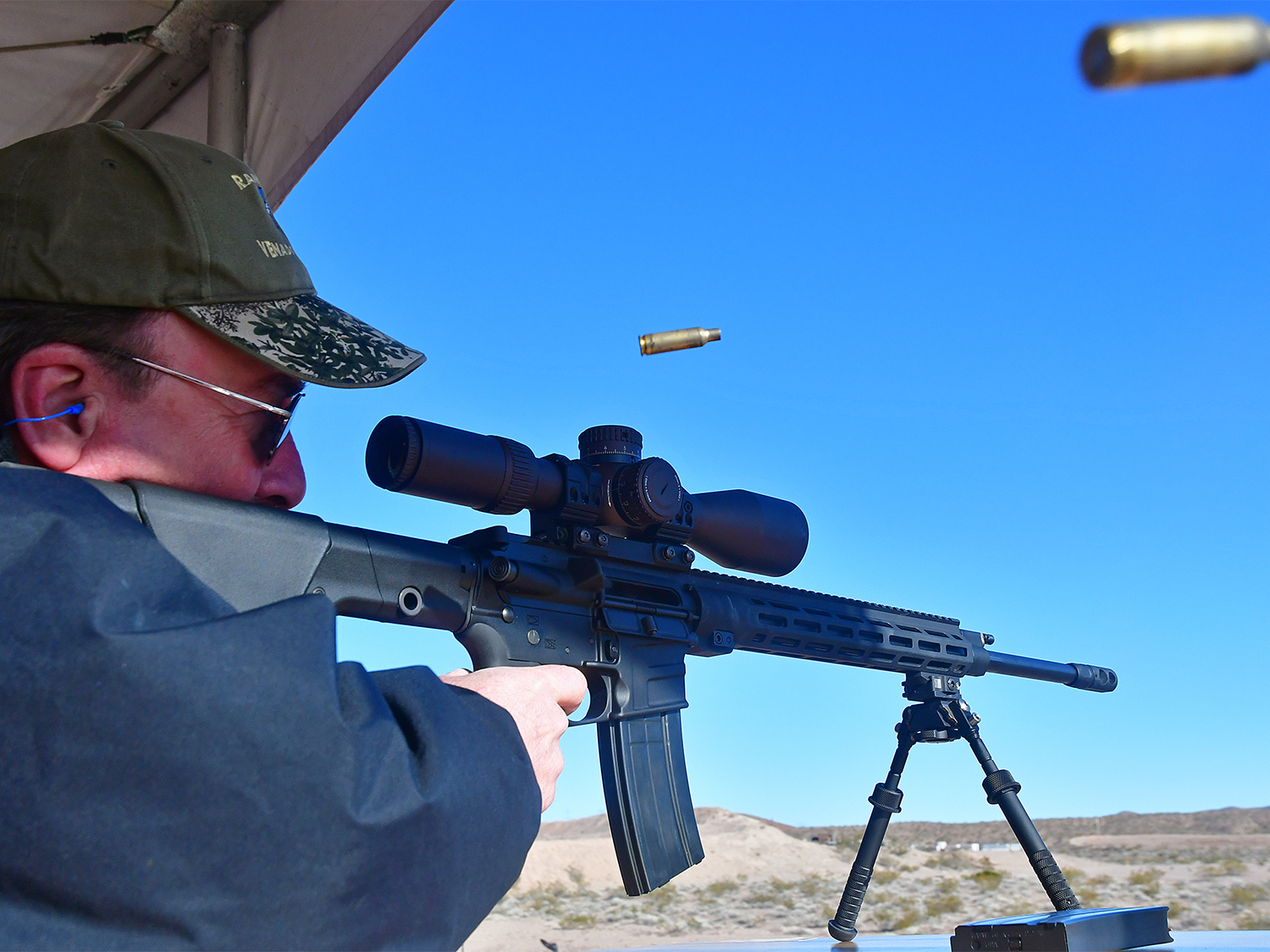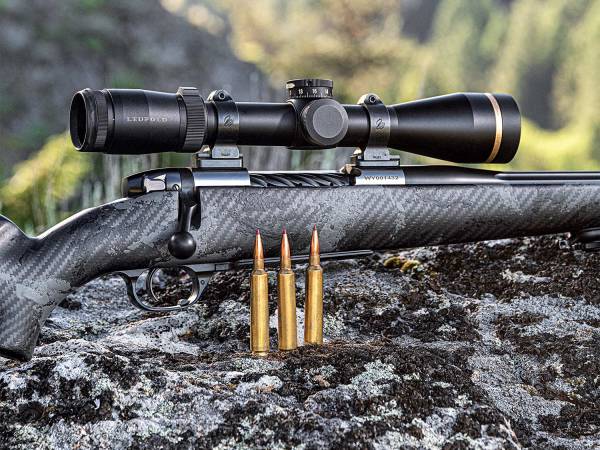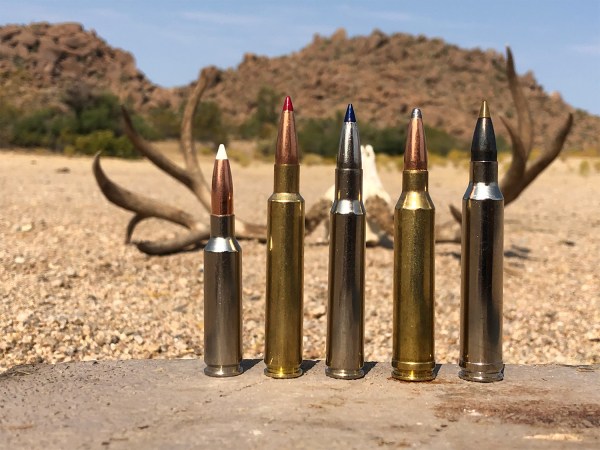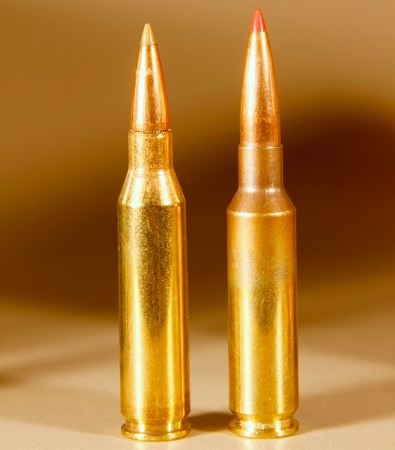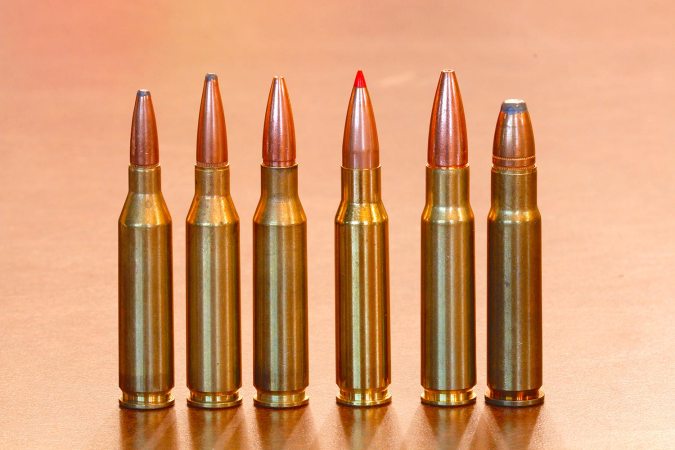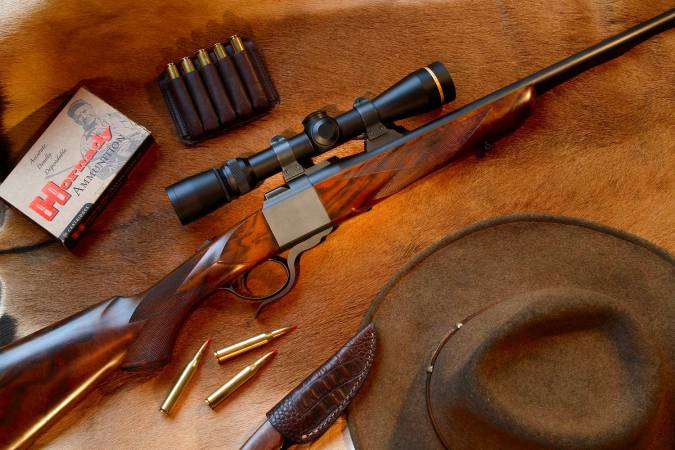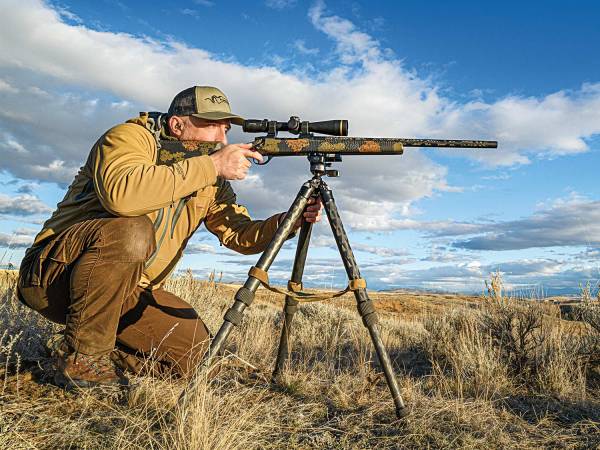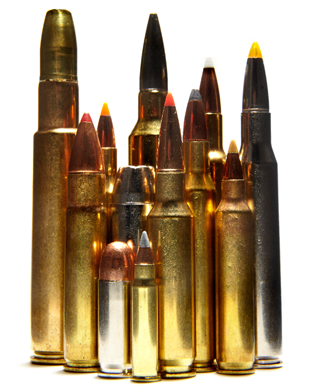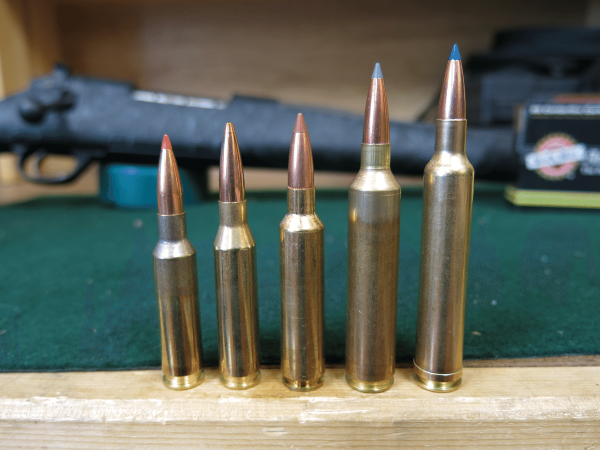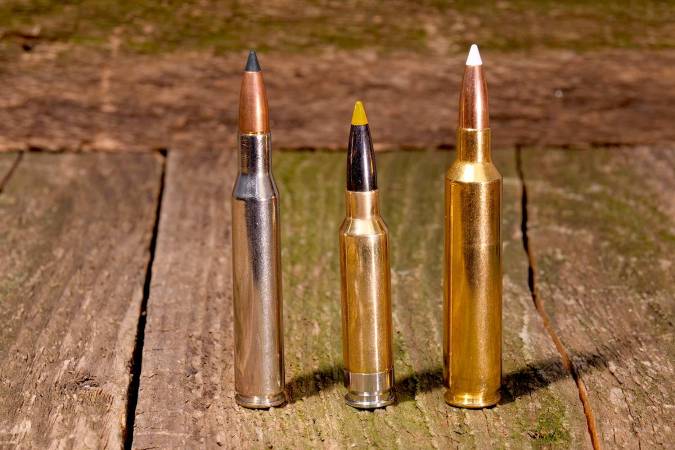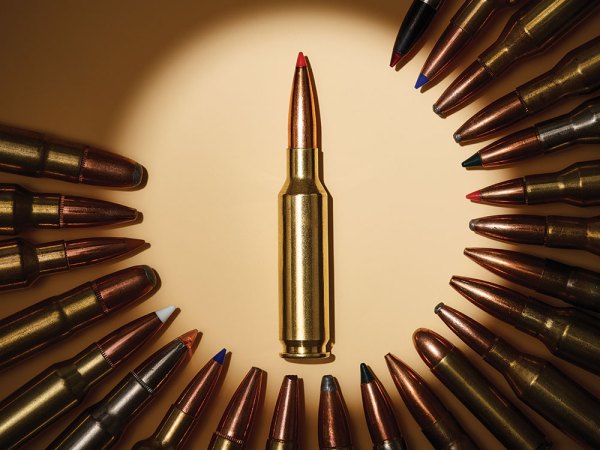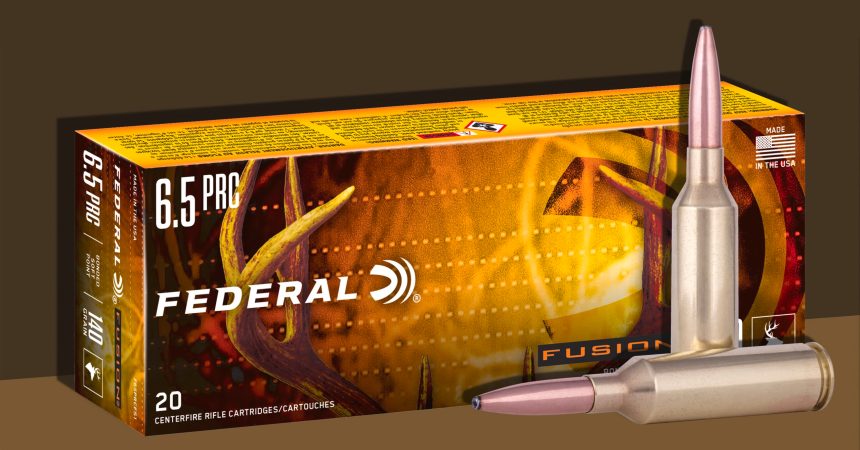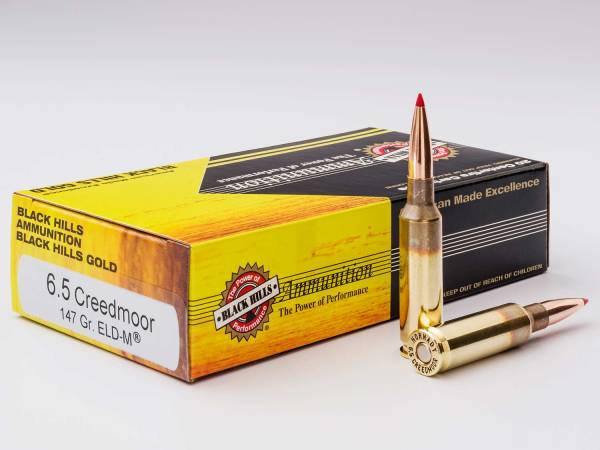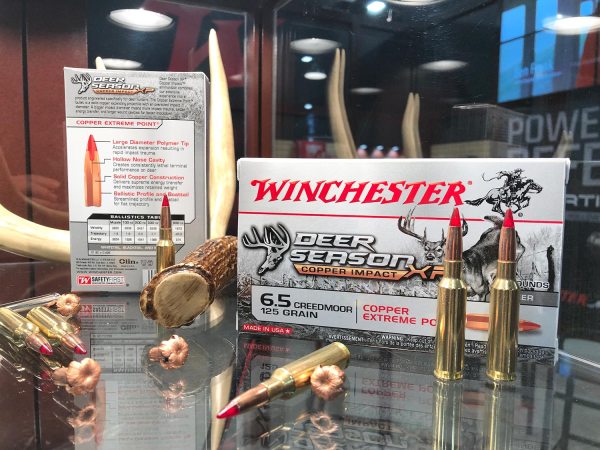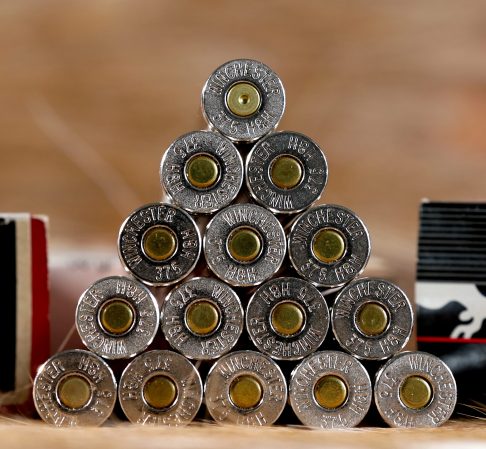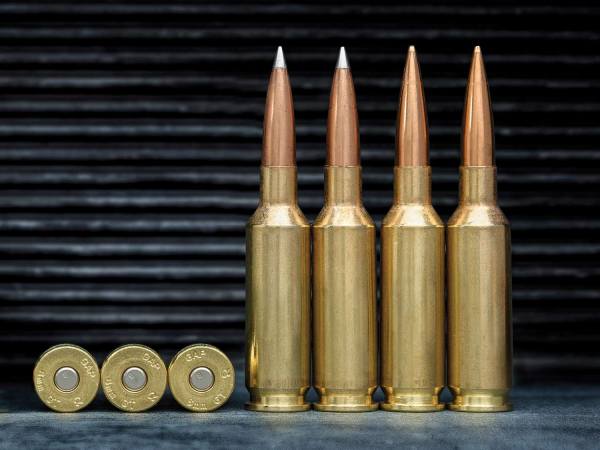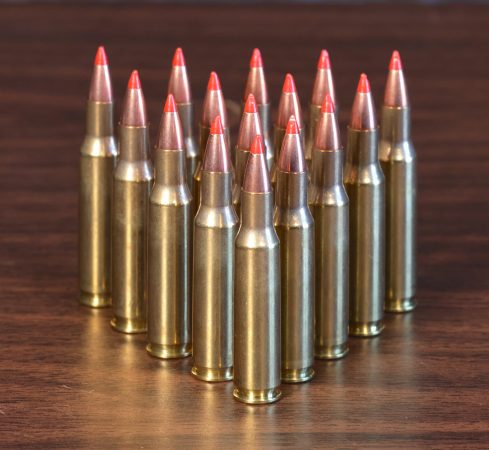We may earn revenue from the products available on this page and participate in affiliate programs. Learn More ›
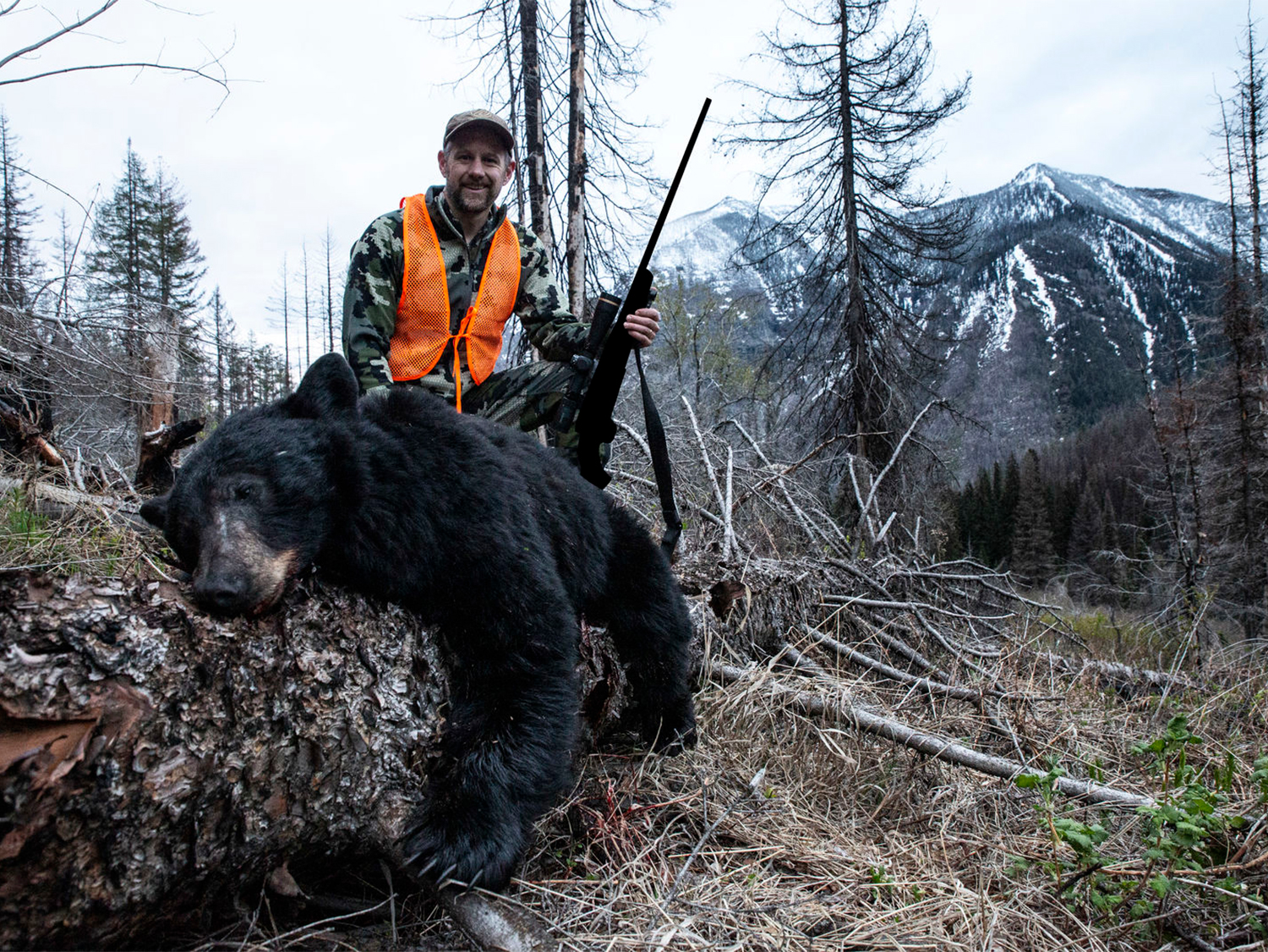
Recent years have seen the introduction of a stunning number of new factory rifle cartridges, with each being heralded as the “The Next Big Thing” for hunting or competitive shooting. This explosion in new-cartridge development was fueled by the phenomenal success of the 6.5 Creedmoor, which led ammomakers to focus on cartridges built around long, heavy-for-caliber, high-B.C. bullets delivering better long-range performance. There was also a demand for better-performing cartridges for AR rifles, again with longer, sleeker bullets. These trends came in response to, and coincided with, a big spike in interest in long-range shooting, creating a perfect storm in new-cartridge development that continues. In fact, several more new factory cartridge designs are on the way.
The last time the shooting world saw so many new cartridges introduced in a relatively short span of time was in the early 2000s, when the short-magnum craze arrived. Since then, with the exception of the .300 WSM, which was arguably the most successful of the short-magnum batch, many of those cartridges proved to be a flash in the pan.
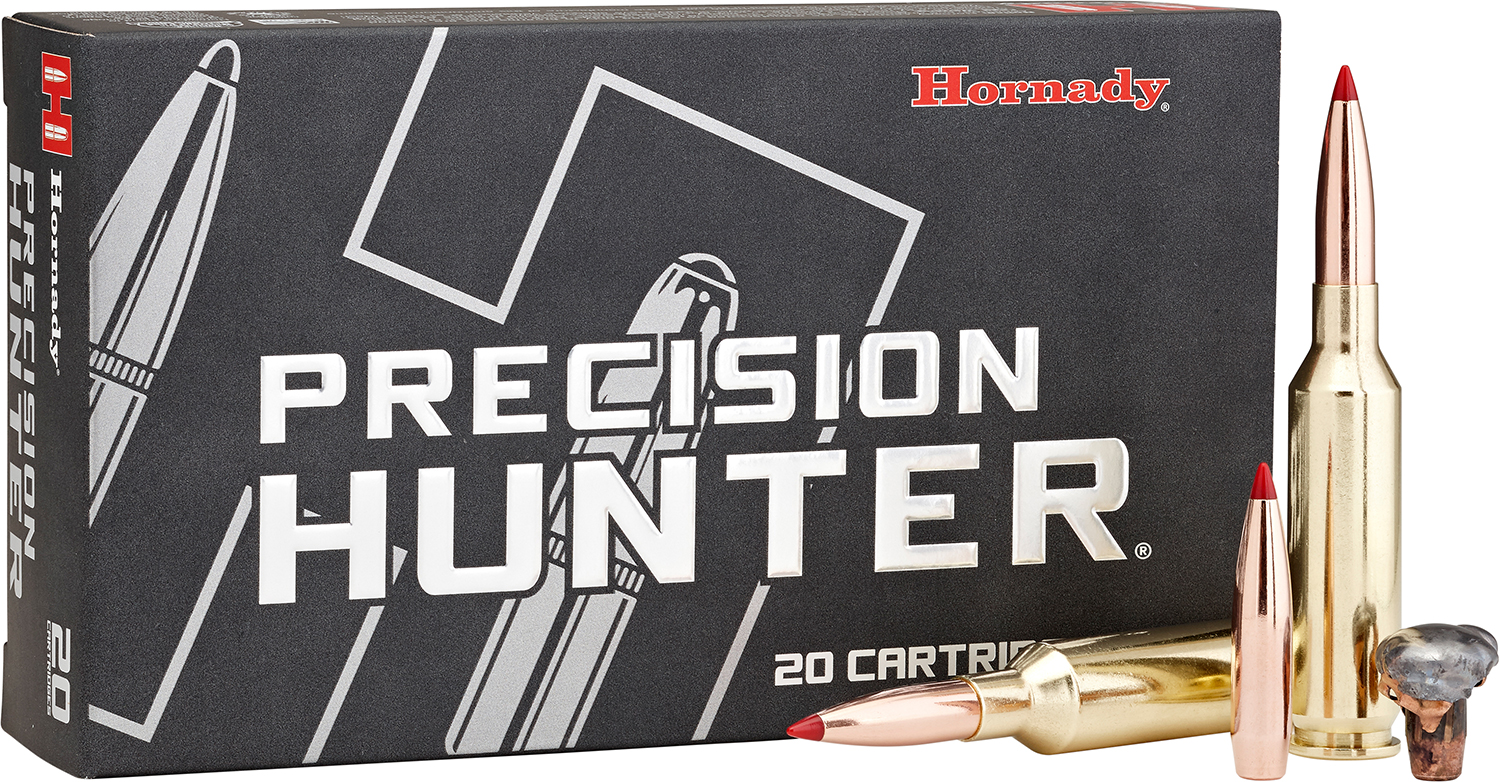
Will today’s newest cartridges follow the same sad market trajectory, or will some of them duplicate the success of the 6.5 Creedmoor? The odds are against it—the 6.5 is likely a once-in-a-generation cartridge that has become a global standard—but some of the newcomers may be poised to do very well. Of course, new cartridges come and go, and only time will tell, but here’s a look at some of the newer cartridges to keep an eye on in the years ahead.
1. .224 Valkyrie
The long-range shortcomings of the .223 Rem./5.56 NATO cartridge have long left AR rifle fans wishing for something better in .22 caliber centerfire. Nosler took a swing at a solution in 2017 with its .22 Nosler, which improved upon .223 Rem. performance by sending bullets of similar weight, initially topping out at 77 grains, downrange faster. In 2018, Federal unveiled its own offering, the .224 Valkyrie, which was essentially built around a long, sleek, high-B.C. 90-grain bullet zipping along at 2,700 fps, and typically fired from rifle barrels with a fast 1:7 twist rate to better stabilize such bullets. That particular load, with a HPBT MatchKing bullet, remains supersonic to about 1,300 yards.
To get there, Federal modified and necked down a 6.8 Remington SPC case to .22 caliber, keeping overall length short enough to work in an AR action and creating a 1,000-yard cartridge in the process. That sort of performance out of an AR-15 platform was stunning. It made the cartridge a great minimal-recoil, long-range varmint and predator round, and while some will always disagree, it is a viable deer cartridge at reasonable range, where legal, and in the hands of a competent shooter.
The cartridge has thus far received an enthusiastic reception, particularly among AR rifle fans, and while ammomakers seldom reveal sales figures, the .224 Valkyrie is trending up 30 percent year-over-year sales growth. Federal currently offers seven different loads with bullet weights ranging from 60 to 90 grains, and other ammomakers, including Hornady and Sierra, are loading for the cartridge. A host of gun makers are now building both ARs and bolt-action guns chambered for .224 Valkyrie.
2. 6mm Creedmoor
The concept for the 6mm Creedmoor has been around since 2007 when John Snow worked with Hornady to develop a wildcat for a story in Outdoor Life. He wanted to call his creation, which was essentially a 6.5 Creedmoor necked down to use .243 bullets, the 6mm HOLE, for Hornady–Outdoor Life Express. The wildcat went on to do quite well in PRS (Precision Rifle Series) competition. Noting the rising popularity of the cartridge, Hornady introduced it as a factory offering in 2017, and the round has since taken off.
The cartridge is a strong seller in Hornady’s match line, and is starting to gain traction as a hunting cartridge. But do hunters really need another 6mm option when the .243 Win. has served so well since 1955? The short answer is yes, and here’s why. For starters, because it shares many design characteristics of the parent 6.5 Creedmoor, it is wonderfully accurate. In bullets of similar weight, it also has less drop and wind deflection. Consider the Winchester 95-grain .243 Win. Deer Season XP load versus Hornady’s 103-grain 6mm Creedmoor ELD-X load. The Hornady starts out 50 fps slower, but outruns the .243 by 168 fps at 300 yards and 279 fps at 500 yards.
There’s also a growing number of available factory loads in 6mm Creedmoor. A quick check of current offerings reveals a total of 16 loads being produced by Hornady, Federal, Barnes, Remington, Sierra, Berger, and Sig Sauer.
3. The Numbered Noslers
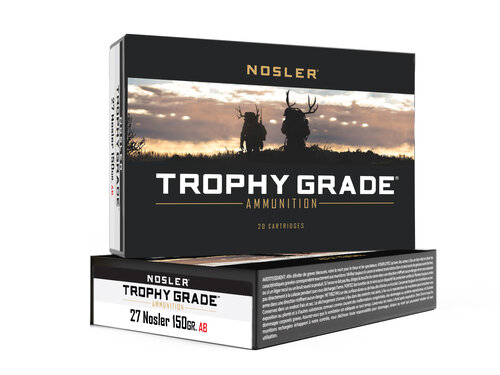
Few companies have been as busy introducing new cartridges over the last decade than Nosler. First came the 26 Nosler, a 6.5mm cartridge, in 2013. That was followed by the 28 Nosler, a 7mm cartridge, in 2015; the 30 Nosler (.308) in 2016; and the 33 Nosler (.338) in 2017.
While these potent cartridges have earned a following, space precludes a discussion of all of them, so we’ll focus on the two newest members of the lineup, the 22 Nosler and the 27 Nosler.
The 22 Nosler, introduced in 2017, was created for AR-15 rifles to improve upon the performance of the .223 Rem. and utilize—you guessed it—long, heavy-for-caliber bullets. Although the case is larger and the round requires a 6.8 SPC magazine, its rebated rim remains compatible with a .223 Rem. bolt face. It has about 15 percent greater case capacity and delivers a significant increase in velocity. The company claims a 400 fps increase over the .223 with 55-grain bullets launched out of 24-inch barrels. Where things really get interesting is with heavier bullets, which currently top out at 85 grains in factory loads. Zeroed at 200 yards, again using a 24-inch barrel, that bullet drops only 7.1 inches at 300 yards, 20.5 inches at 400 yards and 41.4 inches at 500 yards. That puts it in some pretty racy company, and the cartridge has built a reputation for delivering good accuracy.
Nosler’s newest cartridge, the 27 Nosler was introduced last year as a modern makeover of the time-honored .270 Win. While it may seem sacrilegious to mess with the round made famous by Jack O’Connor, Nosler didn’t shy away from the challenge. The 27 Nosler is based on a necked-down .404 Jeffrey case, as are many other Nosler cartridges. The design follows the contemporary trend of using a faster-than-standard twist rate (1:8.5) to stabilize the high-B.C. bullets that are revolutionizing long-range shooting. Loaded with a 150-grain bullet, claimed muzzle velocity is 400 fps faster than the .270 Win. and 300 fps faster than a .270 WSM. It hits with substantially more energy, and drops 11 inches less at 500 yards than a .270 Win.
Initial factory loads include a 150-grain AccuBond and a 165-grain AccuBond Long Range. Think of it as a .270 on steroids.
4. 6.5 PRC
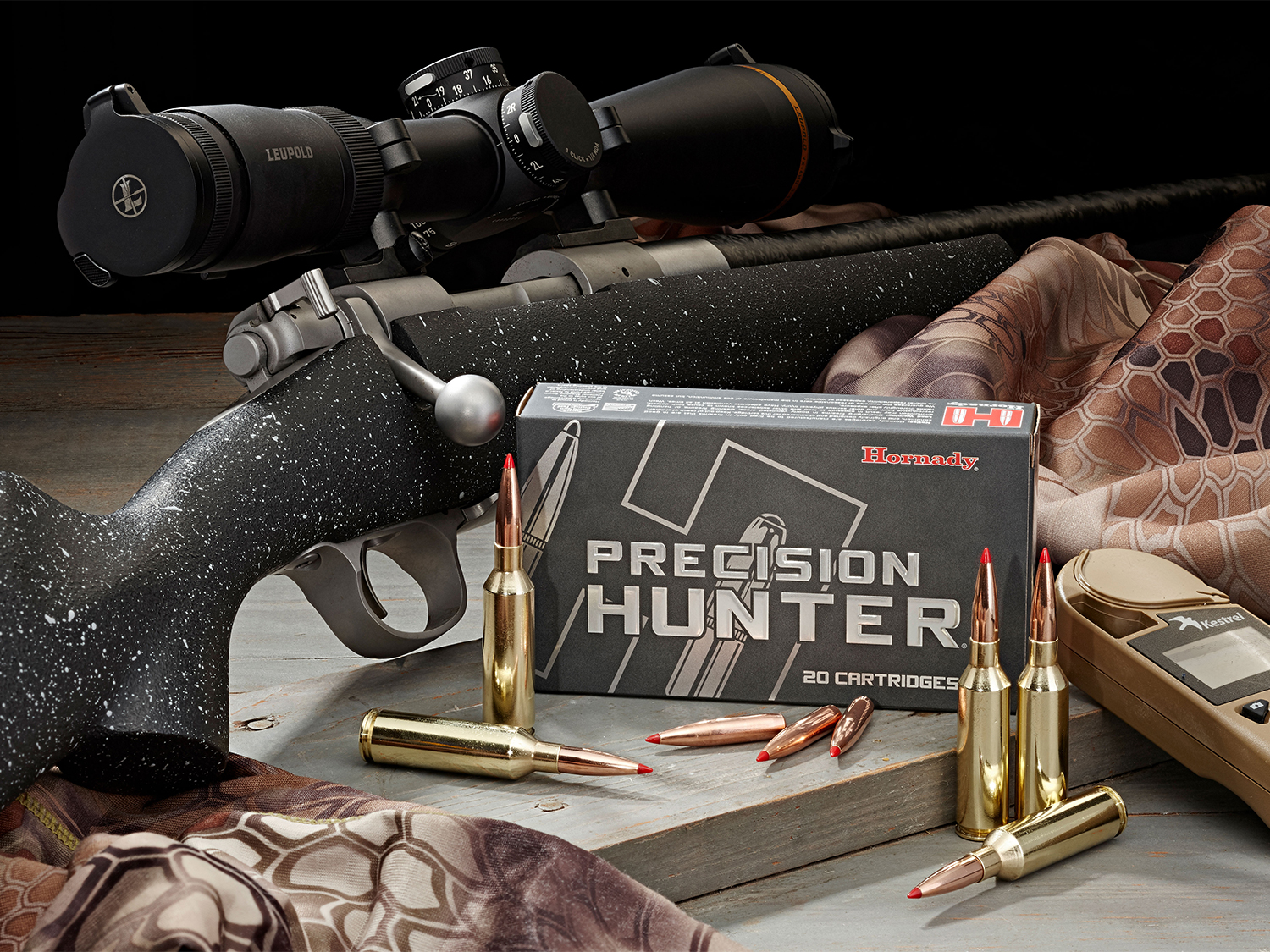
I recently polled a number of seasoned fellow gun writers, asking them which of the newest cartridges they thought had the best chance of long-term success, and the number-one vote-getter was Hornady’s 6.5 PRC (Precision Rifle Cartridge). The cartridge was developed as a long-range hunting round and is often referred to as a “magnumized” 6.5 Creedmoor. Since it’s based on a necked-down .300 Ruger Compact Magnum case, the cartridge holds nearly 30 percent more powder than the 6.5—but not so much as to be overbored and significantly shorten barrel life. It pushes same-weight bullets 200 to 250 fps faster than its Creedmoor sibling, and it does so with excellent accuracy while producing relatively mild recoil.
Loaded with Hornady’s excellent ELD-X bullets, the round hits a ballistic sweet spot for hunters who prowl big, open country. Past 300 yards or so, the 6.5 PRC starts to outrun 7mm Rem. Mag. bullets of similar weight and is less impacted by wind.
Hornady says the cartridge has really taken off as more and more gun manufacturers add the chambering to their lineups, and the company is finding it a challenge to keep up with demand.
5. 6.5 Weatherby RPM
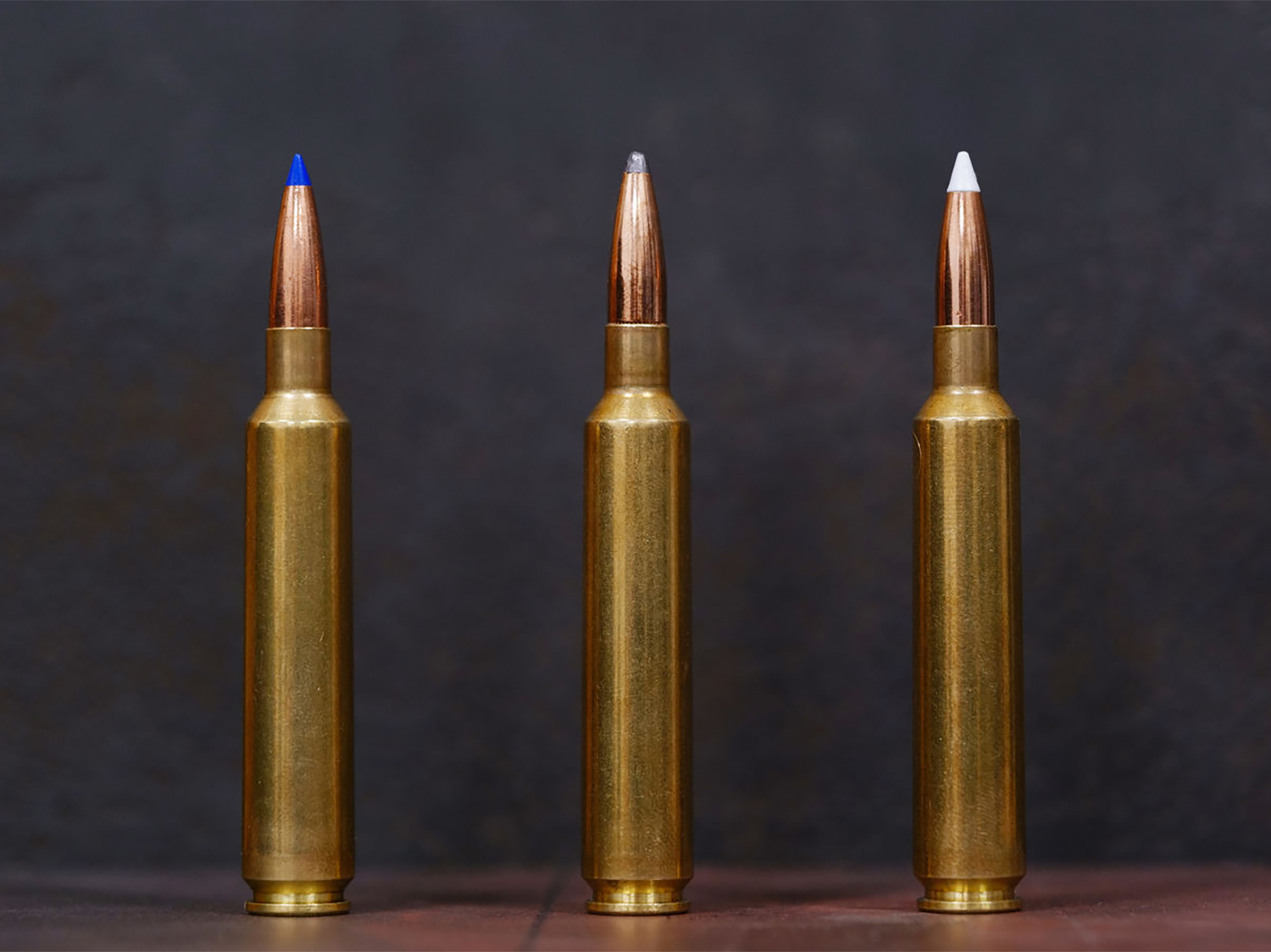
Weatherby has never judged the success of its cartridges by the number of other companies that load ammo or chamber rifles for Weatherby cartridges. Rather, the firm has always relied upon a strong and fanatically loyal customer base, including yours truly, who spent his formative shooting years drooling over the richly figured walnut stocks of rifles in Weatherby’s old Los Angeles retail shop.
It, therefore, came as no small surprise when Weatherby introduced the 6.5 Weatherby RPM cartridge last year. The case had no double-radius shoulder and—shockingly—no belt. Instead, it had a rebated rim and a large body diameter with little taper and a 35-degree shoulder to increase capacity and boost 6.5mm bullet velocities to satisfy Weatherby loyalists’ need for speed.
Launching a 140-grain AccuBond bullet at 3,075 fps, the round is faster than most other 6.5mm cartridges and delivers 1,500 foot pounds of energy at 500 yards. It was introduced as a marriage-made-in-heaven match for the new Mark V Backcountry Ti (titanium action) rifle, which weighs a mere 4.9 pounds, and the non-titanium Backcountry, which weighs 5.4 pounds.
While the new cartridge is a significant departure from the past for Weatherby, don’t expect it to be the last. The company hints at plans to build on the rebated precision magnum family in the future.
If the 6.5 Weatherby RPM still isn’t fast enough for you, you need only look at the 6.5-300 Weatherby Magnum, introduced five years ago. Based on the .300 Weatherby Mag case, that cartridge sends 127-grain bullets sizzling along at 3,531 fps, making it the world’s fastest commercial 6.5mm cartridge.
6. .300 HAM’R
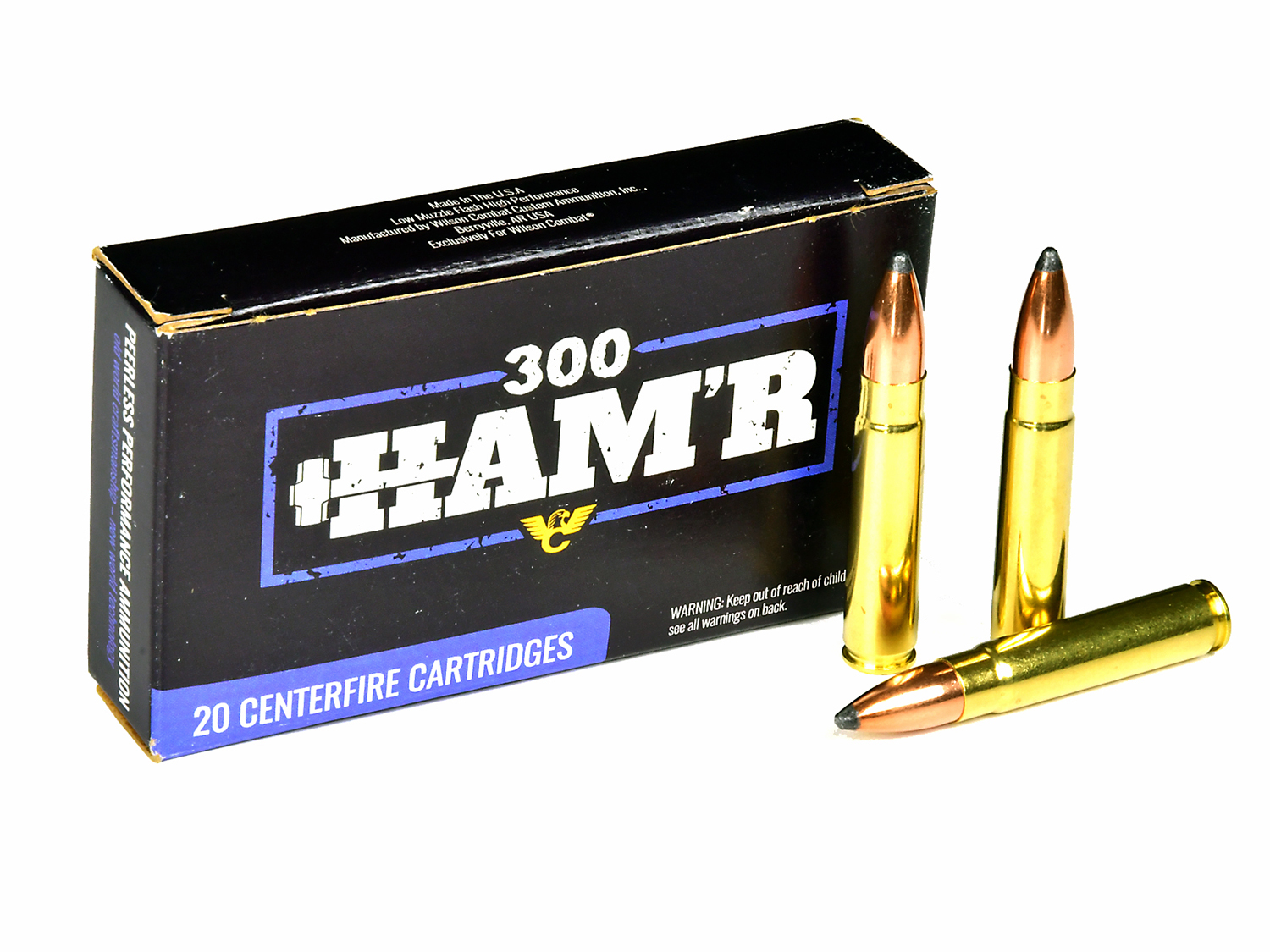
If there’s a dark horse in the current new cartridge race, it’s the .300 HAM’R, which was created by Bill Wilson, the noted competitive shooter and owner of Wilson Combat. He created the round with an eye toward duplicating the terminal effectiveness of the .30-30 Win., but doing so out of AR rifles using modern, high-B.C. bullets with a flatter trajectory.
His cartridge uses a .223 Rem. parent case with the neck expanded to accept .30-caliber bullets, a 30-degree neck angle and a decreased taper to maximize powder capacity. The end result is a round that not only outperforms the .30-30, but also the .300 Blackout and 7.62×39.
Comparing loads with 125-grain bullets, the HAM’R is 331 fps faster than the .300 Blackout and 131 fps faster than the 7.62×39 out of rifles with barrels of equal length. At 200 yards, the .300 HAM’R hits with 40 percent more energy than the .300 Blackout, which has about twice the bullet drop at 200 and 300 yards than the .300 HAM’R.
The cartridge is thus far available in a variety of loads only from Wilson Combat or by loading your own, but the round got a significant boost when it was recently accepted by SAAMI (the organization that sets industry standards to ensure the safety and reliability of ammunition and firearms), under the sponsorship of SIG Sauer. If other ammo makers start loading for the .300 HAM’R, its popularity could quickly grow.
7. .300 PRC
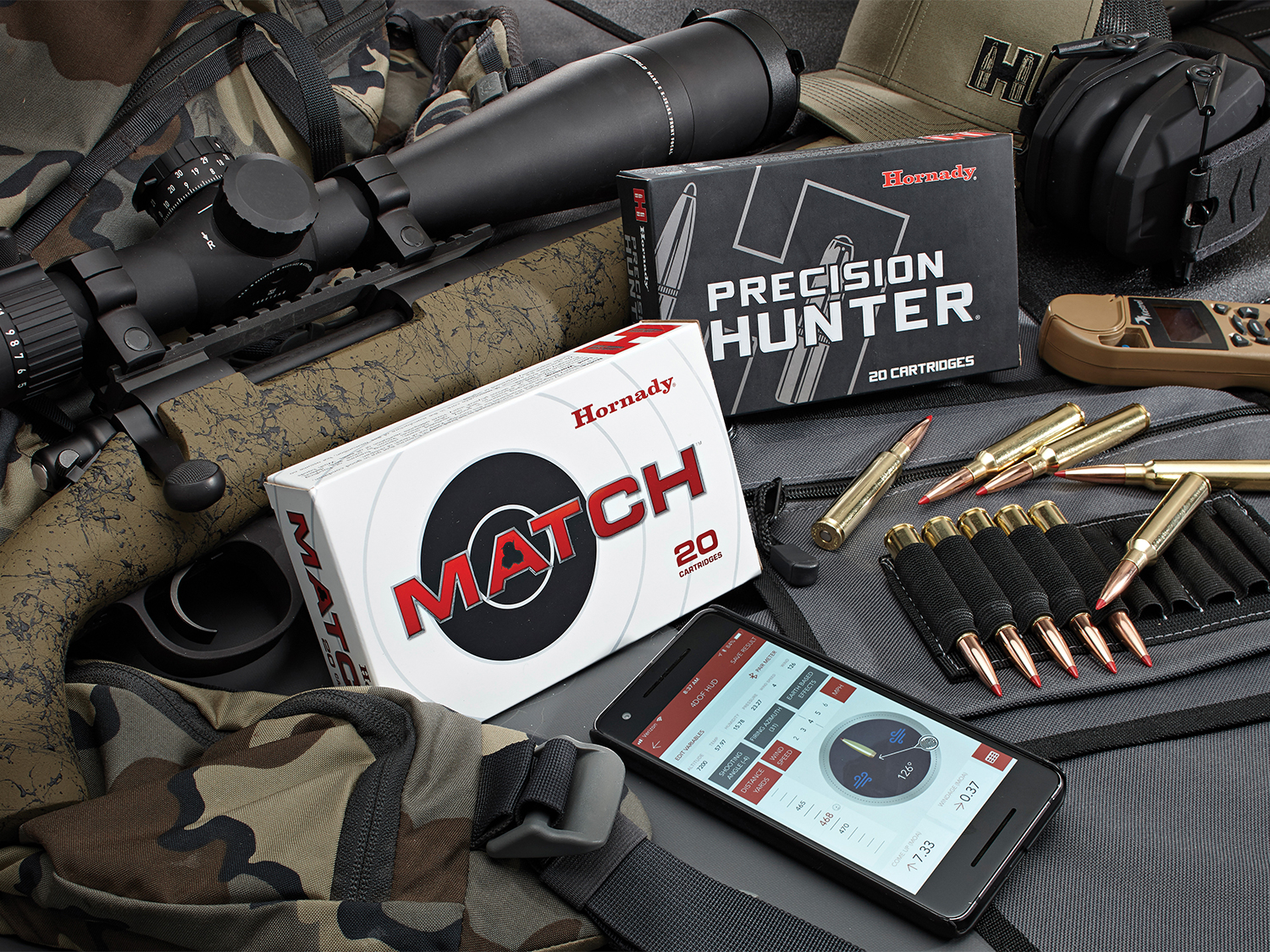
It’s not much of a stretch to make the case that Hornady’s .300 PRC, conceived in part as an answer to the U.S. military’s long-range sniper needs, may be the best of the .30-caliber magnums. Just as the 6.5 PRC borrowed some design principles from the 6.5 Creedmoor, so did the .300 PRC borrow from those cartridges. These designs incorporate characteristics that result in an inherently accurate cartridge that is superior, in many ways, to older designs. Based on a .375 Ruger case necked down to .308, the .300 PRC cartridge has minimal taper, a 30-degree shoulder, tight freebore diameter and a built-in head-height advantage over other cartridges that allows it to seat long, heavy, high-B.C. bullets.
Compared to the .300 Win. Mag., which typically uses a 1:10 rifling twist and bullets in the 150-grain to 210-grain range, the .300 PRC normally uses a faster 1:8 twist rate to better stabilize long, 212-grain and 225-grain high-B.C. bullets. As a point of comparison, Hornady’s 212-grain ELD-X load has a nearly identical trajectory out to 500 yards as Winchester’s 190-grain AccuBond load, which is the firm’s heaviest bullet currently listed in .300 Win. Mag. Even though that heavier .300 PRC bullet starts out about 40 fps slower, it keeps pace with the lighter AccuBond. With a 200-yard zero, both bullets will drop just over 38 inches at 500 yards, but the Hornady will impact with 2,304 foot pounds of energy versus 1,983 foot pounds for the .300 Win. Mag.
While the cartridge is still in its early launch phase, Hornady reports steadily growing demand as more people discover the capabilities of the 300 PRC. At least 16 gun makers currently make .300 PRC rifles, and you can expect to see more guns chambered for the cartridge in the coming year.
8. .350 Legend
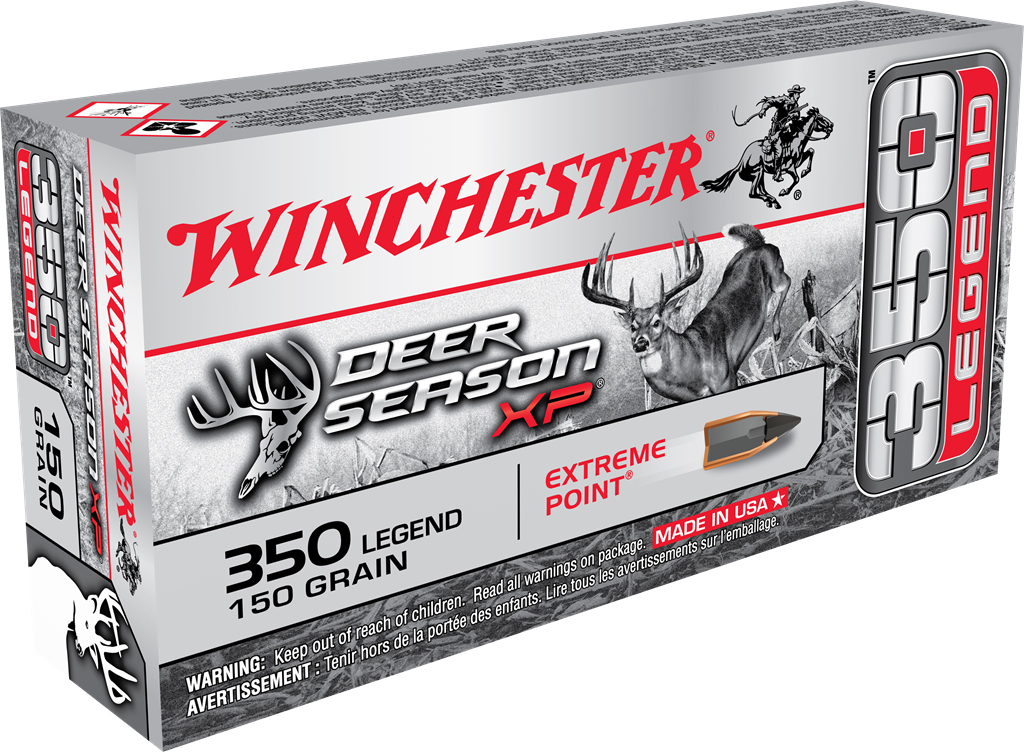
The .350 Legend bucks the trend toward smaller cartridges with long, high-B.C. bullets because it was built for an entirely different purpose. It is a straight-walled cartridge designed initially for AR rifles and intended primarily for use in states that ban most traditional centerfire rifle cartridges for hunting. While the new the cartridge sells very well in those areas, its long-term popularity may depend on those states continuing to demand straight-walled cartridges and deeming the .350 Legend to be acceptable. If the laws change, so could the fortunes of the .350 Legend.
The cartridge is based on what appears to be a blown-out .223 Rem case, although Winchester says it’s a new case. According to Winchester, the cartridge delivers more energy than a .30-30 Win., produces softer recoil than a .243 Win. and is the fastest straight-walled cartridge. Some have questioned those claims, but it’s important to note that Winchester bases those comparisons on rifles with barrels of equal length, and Winchester’s numbers are based on tests with rifles using 20-inch barrels, while published data for other cartridges is often based on the use of 24-inch barrels.
In addition to five loads from Winchester with bullet weights ranging from 150 grains to 265 grains, Hornady and Federal now offer a number of .350 Legend loads.
